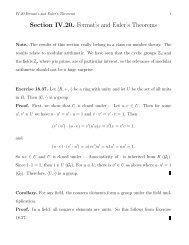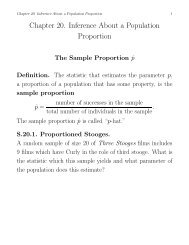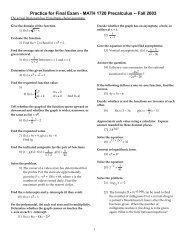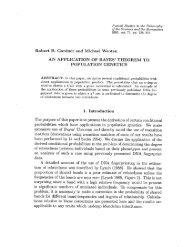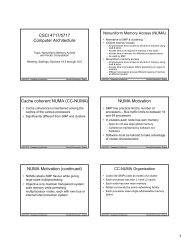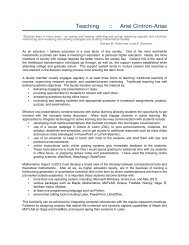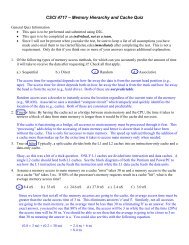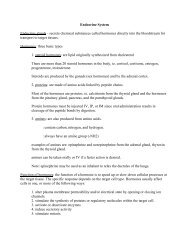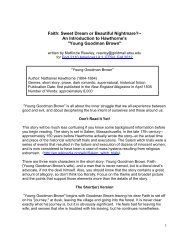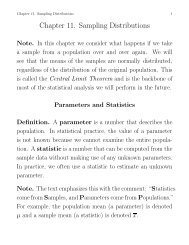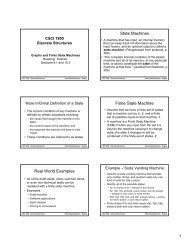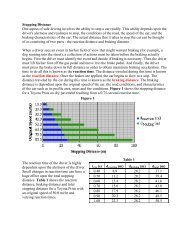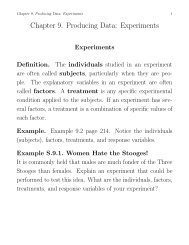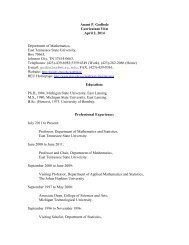Boolean Algebra - Etsu
Boolean Algebra - Etsu
Boolean Algebra - Etsu
You also want an ePaper? Increase the reach of your titles
YUMPU automatically turns print PDFs into web optimized ePapers that Google loves.
Chapter 5: <strong>Boolean</strong> <strong>Algebra</strong> 95The following sections show how boolean expressions can be usedto modify combinational logic in order to reduce complexity orotherwise modify its structure.5.4 Laws of <strong>Boolean</strong> <strong>Algebra</strong>The manipulation of algebraic expressions is based on fundamentallaws. Some of these laws extend to the manipulation of booleanexpressions. For example, the commutative law of algebra which statesthat the result of an operation is the same regardless of the order ofoperands holds true for boolean algebra too. This is shown for the ORfunction applied to two variables in the truth tables of Figure 5-10.A B A + B A B B + A0 0 0+0 = 0 0 0 0+0 = 00 1 0+1 = 1 0 1 1+0 = 11 0 1+0 = 1 1 0 0+1 = 11 1 1+1 = 1 1 1 1+1 = 1Figure 5-10 Commutative Law for Two Variables OR'ed TogetherNot only does Figure 5-10 show how the commutative law appliesto the OR function, it also shows how truth tables can be used inboolean algebra to prove laws and rules. If a rule states that twoboolean expressions are equal, then by developing the truth table foreach expression and showing that the output is equal for allcombinations of ones and zeros at the input, then the rule is proventrue.Below, the three fundamental laws of boolean algebra are givenalong with examples.Commutative Law: The results of the boolean operations AND andOR are the same regardless of the order of their operands.A + B = B + AA · B = B · AAssociative Law: The results of the boolean operations AND and ORwith three or more operands are the same regardless of which pair ofelements are operated on first.



